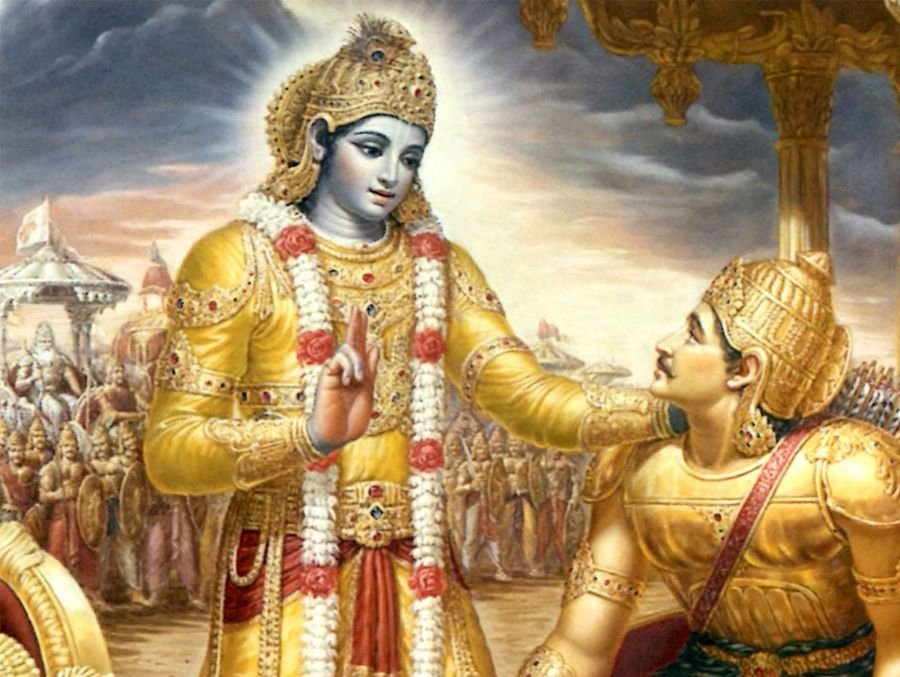(Image Courtesy Mahanidhiswami)
The Divine Has No Beginning, Middle, Or End
अनादिमध्यान्तमनन्तवीर्य-
मनन्तबाहुं शशिसूर्यनेत्रम् |
पश्यामि त्वां दीप्तहुताशवक्त्रं-
स्वतेजसा विश्वमिदं तपन्तम् || 11.19||
anādi-madhyāntam ananta-vīryam
ananta-bāhuṁ śhaśhi-sūrya-netram
paśhyāmi tvāṁ dīpta-hutāśha-vaktraṁ
sva-tejasā viśhvam idaṁ tapantam|| 11.19||
Shloka Translation
BG – Ch. 11- Ver. 19:
I envision you as having no beginning, middle, or end, with boundless strength and arms, the moon and sun as your eyes, and flaming fire coming from your lips. This universe is consumed by your radiance.
Explanation
The Lord’s shape has no origin, middle, or end. Out of his delight at what he is seeing, he repeats this after only three verses. When a statement is repeated in awe, it is regarded as an expression of astonishment. Arjuna repeats his words in awe.
God does not have a beginning, middle or an end. This is due to the fact that he possesses space, time, and causality. As a result, he is beyond their comprehension. He can’t be contained by space, time, or causation in any way. Furthermore, the sun, moon, and stars receive their energy from the earth.
Verse & what we can learn
Arjuna emphasises Ishvara’s boundless nature in this shloka. He tried and failed to find the beginning, middle, and end of Ishvara’s cosmic shape on several occasions. He does find something to cling to in his head. The moon and the sun are regarded as the cosmic form’s eyes. This is beneficial because it allows us to remember Ishvara’s cosmic shape to the best of our abilities whenever we see the moon or the sun.
Ishvara’s tremendous prana shakti is described by Arjuna. All of our physiological activities are fueled by prana. It allows us to digest food, move our arms and legs, and circulate blood, among other things. Similarly, Ishvara’s cosmic prana, which is immeasurably more powerful than human prana, likewise powers the universe. This is demonstrated through Arjuna’s limitless arms, which signify his boundless prowess and ability to do actions.
The cosmic form begins to change, and Arjuna notices it. It changes from a pleasant image to something a little more unusual. The fire in Ishvara’s mouth represents the prana in him that eats food. The food here, on the other hand, relates to the sacrifices that we make. Ishvara consumes the offering, or “hutam,” which causes the fire from his mouth to heat or power the universe.
To acquire knowledge and to implement that knowledge in life one needs to be mentally and physically active and healthy and for that daily meditation is a great tool.
There are various types of meditation like Buddhist meditation, heartfulness meditation, mindfulness meditation, meditation for stress, and each meditation benefits are countless. There is also numerous meditation techniques for beginners which help in practicing daily meditation so go ahead and start your journey towards a peaceful and balanced life.
In the next shloka Arjuna begins to describe the cosmic form of Ishvara.
Let’s learn to live with “The Gita” via Meditation Affinity…
